Technical University of Nuremberg
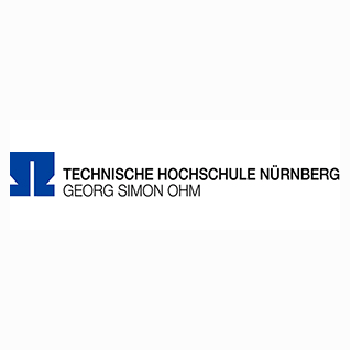
Founded: 1823
Address: Keßlerplatz 12 - Nuremberg, Germany
Phone: +49 911 58800
Address: Keßlerplatz 12 - Nuremberg, Germany
Phone: +49 911 58800
Here you find out Technical University of Nuremberg complete information about fees, location, degree Technical University of Nuremberg offers, number, website, and much more. Technical University of Nuremberg is a leading university in Nuremberg - Germany.
You can also find out jobs at Technical University of Nuremberg for students, teachers, and professors. We also update the database for an internship at Technical University of Nuremberg for students.
The Nuremberg Institute of Technology has a distinct profile and strives to maintain its leading position among its competitors. Our comprehensive success in teaching, research and management has shown that we are on the right path. For the next few years and decades to come, our goals will remain the same: to take on trend-setting developments and bring about lasting changes.
Business an...d society benefit from the knowledge and technology at and developed by the university, and Nuremberg Tech helps generate employment. Applied research and development involving our students are a top priority. The large number of ongoing research projects at the university and its institutes is a reflection of this innovation potential.
The Nuremberg Institute of Technology is a university of applied sciences. Hands-on teaching and research provide students with an education that combines the use of scientific methods and artistic concepts. Additional emphasis is placed on acquiring the "soft" skills required in modern work environments. The university supports and encourages students to develop social and intercultural skills.
In a Europe of many regions, it is important to combine regional attachment and international orientation as components of all our degree programs. The Nuremberg Institute of Technology is integrated into the structures of our region, central Franconia, which is located in northern Bavaria. Research and teaching meet the needs of the regional economy. At the same time, the university is always establishing and maintaining partnerships with universities and businesses worldwide. An active exchange of students and scientists promotes the transfer of knowledge and cultures across regional and national borders.
The university can boast a long and successful history and is steeped in tradition, including famous figures such as Georg Simon Ohm, who was an exemplary researcher and teacher. This tradition is followed by members of the university as well as its alumni.
Integrated, process-oriented organizational structures enable interdisciplinary and market-focused work. The Nuremberg Institute of Technology is involved in all activities and meets the needs of its students and its partners in business and society. It is characterized by its dedication to responsible economic actions that are in line with ethical, social and ecological standards. Social changes represent a challenge for innovation and an opportunity for improvement.
Personal commitment and identification with the university are requirements for everyone to succeed. The university is supportive of its employees and regards open communication and a trusting work relationship as essential prerequisites. Our employees" work-life balance is of great importance to us.
In 2013, the university was renamed Technische Hochschule Nürnberg Georg Simon Ohm in recognition of the applied research and educational quality of our programs. We are very proud of this recognition, but also of the history preceding and culminating in the achievement.
The university was established on August 1, 1971, following the Bavarian Law for Universities of Applied Sciences passed on October 27, 1970. The university is a corporation under public law. The state of Bavaria is the bearer of the requirements. Major academic disciplines include engineering, business administration, social studies and design.
The inititative of focusing on engineering was born in one of the oldest polytechnics in Europe, the "Municipal Polytechnic Institute" which was founded in 1823 by Johannes Scharrer, Nuremberg´s mayor and patron of the German railroad system.
When the school was nationalized in 1833, the physicist Georg Simon Ohm became a member of the staff and was director of the institute from 1839 to 1849.
After first being called an "Industrieschule" (Industrial School) and "Königlich Bayrisches Technikum" (Royal Bavarian Polytechnic), later "Höhere Technische Staatslehranstalt" (Higher Education Technical Institute), the school was renamed "Ohm-Polytechnikum Nürnberg" in 1933 to honor Ohm and to commemorate its one hundredth anniversary.
After the Municipal Building School was disbanded in 1935, the Department for Structural Building was incorporated.
The business subjects available evolved from the "Höhere Wirtschaftsfachschule" (Higher Business School), which had been founded in 1963.
The social studies subjects evolved from the "Höhere Fachschule für Sozialarbeit (Higher School for Social Work) since June 1, 1963" and from the "Höhere Fachschule für Sozialpädagogik" (Higher School for Social Education) since September 1, 1968. The original institutions had been founded in 1925 and 1927 respectively.
The so-called "open art room" and the "Höhere Fachschule für Grafik und Werbung der Stadt Nürnberg" (Higher School for Graphics and Advertising of the City of Nuremberg) were founded in 1910 and they were the precursors of the Faculty of Design.
On August 4, 1983 the polytechnic in Nuremberg was officially renamed "Georg-Simon-Ohm-Fachhochschule Nürnberg" by decree of the Bavarian state parliament. Thus the traditional name for the largest institution had been reinitiated, honoring the renowned physicist, Georg Simon Ohm, who had lectured at the original institute and had been its director from 1839 to 1849.
Professor for mathematics und physics at the "Königliche Polytechnische Schule Nürnberg" (Royal Polytechnic School of Nuremberg) from 1833 to 1849, chancellor from 1839 to 1849.
Georg Simon Ohm was born in Erlangen on March 16, 1789 and was the son of the university"s locksmith. His father must have been an extraordinary person. During his spare time he studied philosophy, and even in his later life he took a great interest in studying mathematics with his two sons Georg Simon and Martin.
After leaving high school at the age of 16, Georg Simon attended the university, then moved to Switzerland to work as a private teacher. After returning home, he received his Ph.D. after completing his thesis entitled "About light and colors." His first book, which he hoped would gain him recognition in the scientific community, was a failure.
When Prussia set up a new school system in Cologne, Georg Simon Ohm moved there, taking over the collection of physical instruments from the Jesuits" college and teaching mathematics and physics. He spent most of his salary on replacing old physics equipment and experimenting in the chemistry laboratory. In early 1821 he discovered the important interaction between current intensity, voltage and conductor resistance - Ohm"s law, as it is still called today: voltage equals current intensity times resistance.
Unlike his contemporaries, Ohm quickly realized the universal importance of what he had derived experimentally. He went on a one-year sabbatical, moved to Berlin, where his brother was a professor and wrote a book entitled "The Galvanic Chain mathematically revised," which would not become famous until years later. Ohm´s consistent rejection of the natural philosophy treatment of electricity was not well-received. On the contrary, he was criticized for "pointless playing with mathmatical symbols." After several years Ohm became a physics professor at the "Königlich-bayerisches Polytechnikum" (Royal Bavarian Polytechnic) in Nuremberg which he later headed as president from 1839 to 1849.
In 1841 the Royal Society in London honored Ohm with the Copley medal, which then carried the same significance as the Nobel prize does today. Only one German scientist, Carl Friedrich Gauss, had received this honor before him. The same year Ohm became a member of the Academia di Turino, and in 1842 a foreign member of the Royal Society in London. Thus, the eccentric who used to be seen out walking his spitz in the forests on the outskirts of Nuremberg finally became an internationally recognized and well-known expert. Though late, he was inundated with honors in his own country. These years of success encouraged him to work on new scientific problems, especially in the field of acoustics. His "Theory of Sounds," explaining the modulation of sounds as a result of overriding waves, was rejected. When Herman von Helmholtz described his sound analyses just 15 years later, Ohm´s theory was ascribed to him. The only well-known portrait shows the scientist in his later years in Munich, Bavaria"s capital, with the decorative cross of the Maximilian Order for Arts and Sciences. In 1849 King Maximilian II of Bavaria appointed Ohm the second curator for mathematical and physical collectables in Bavaria. In 1852 he was appointed professor for physics and mathematics heading the physics department of the University of Munich. At the same time Ohm was appointed coordinator of the telegraph administration. In 1850 he was awarded the "Freedom of the Town" by the city of Nuremberg. Two years after his late recognition the physicist died after suffering a stroke at the age of 65 and was buried in the old South Cemetary in Munich. In 1881 he was granted the highest honor by the Electrical World Congress: His name was made the international unit of electrical resistance, indicated by the capital omega.
The Technical University of Munich erected a memorial in his honor, the German Museum exhibited his instruments and in 1933 the State Academy for Applied Sciences in Nuremberg was renamed "Ohm-Polytechnikum Nürnberg," commemorating its one hundredth anniversary. The University of Applied Sciences Nuremberg was officially renamed "Georg-Simon-Ohm-Fachhochschule Nürnberg" by the Bavarian state parliament after the Ohm Polytechnic Institute had been incorporated as a field of engineering education in 1971.
You can also find out jobs at Technical University of Nuremberg for students, teachers, and professors. We also update the database for an internship at Technical University of Nuremberg for students.
The Nuremberg Institute of Technology has a distinct profile and strives to maintain its leading position among its competitors. Our comprehensive success in teaching, research and management has shown that we are on the right path. For the next few years and decades to come, our goals will remain the same: to take on trend-setting developments and bring about lasting changes.
Business an...d society benefit from the knowledge and technology at and developed by the university, and Nuremberg Tech helps generate employment. Applied research and development involving our students are a top priority. The large number of ongoing research projects at the university and its institutes is a reflection of this innovation potential.
The Nuremberg Institute of Technology is a university of applied sciences. Hands-on teaching and research provide students with an education that combines the use of scientific methods and artistic concepts. Additional emphasis is placed on acquiring the "soft" skills required in modern work environments. The university supports and encourages students to develop social and intercultural skills.
In a Europe of many regions, it is important to combine regional attachment and international orientation as components of all our degree programs. The Nuremberg Institute of Technology is integrated into the structures of our region, central Franconia, which is located in northern Bavaria. Research and teaching meet the needs of the regional economy. At the same time, the university is always establishing and maintaining partnerships with universities and businesses worldwide. An active exchange of students and scientists promotes the transfer of knowledge and cultures across regional and national borders.
The university can boast a long and successful history and is steeped in tradition, including famous figures such as Georg Simon Ohm, who was an exemplary researcher and teacher. This tradition is followed by members of the university as well as its alumni.
Integrated, process-oriented organizational structures enable interdisciplinary and market-focused work. The Nuremberg Institute of Technology is involved in all activities and meets the needs of its students and its partners in business and society. It is characterized by its dedication to responsible economic actions that are in line with ethical, social and ecological standards. Social changes represent a challenge for innovation and an opportunity for improvement.
Personal commitment and identification with the university are requirements for everyone to succeed. The university is supportive of its employees and regards open communication and a trusting work relationship as essential prerequisites. Our employees" work-life balance is of great importance to us.
In 2013, the university was renamed Technische Hochschule Nürnberg Georg Simon Ohm in recognition of the applied research and educational quality of our programs. We are very proud of this recognition, but also of the history preceding and culminating in the achievement.
The university was established on August 1, 1971, following the Bavarian Law for Universities of Applied Sciences passed on October 27, 1970. The university is a corporation under public law. The state of Bavaria is the bearer of the requirements. Major academic disciplines include engineering, business administration, social studies and design.
The inititative of focusing on engineering was born in one of the oldest polytechnics in Europe, the "Municipal Polytechnic Institute" which was founded in 1823 by Johannes Scharrer, Nuremberg´s mayor and patron of the German railroad system.
When the school was nationalized in 1833, the physicist Georg Simon Ohm became a member of the staff and was director of the institute from 1839 to 1849.
After first being called an "Industrieschule" (Industrial School) and "Königlich Bayrisches Technikum" (Royal Bavarian Polytechnic), later "Höhere Technische Staatslehranstalt" (Higher Education Technical Institute), the school was renamed "Ohm-Polytechnikum Nürnberg" in 1933 to honor Ohm and to commemorate its one hundredth anniversary.
After the Municipal Building School was disbanded in 1935, the Department for Structural Building was incorporated.
The business subjects available evolved from the "Höhere Wirtschaftsfachschule" (Higher Business School), which had been founded in 1963.
The social studies subjects evolved from the "Höhere Fachschule für Sozialarbeit (Higher School for Social Work) since June 1, 1963" and from the "Höhere Fachschule für Sozialpädagogik" (Higher School for Social Education) since September 1, 1968. The original institutions had been founded in 1925 and 1927 respectively.
The so-called "open art room" and the "Höhere Fachschule für Grafik und Werbung der Stadt Nürnberg" (Higher School for Graphics and Advertising of the City of Nuremberg) were founded in 1910 and they were the precursors of the Faculty of Design.
On August 4, 1983 the polytechnic in Nuremberg was officially renamed "Georg-Simon-Ohm-Fachhochschule Nürnberg" by decree of the Bavarian state parliament. Thus the traditional name for the largest institution had been reinitiated, honoring the renowned physicist, Georg Simon Ohm, who had lectured at the original institute and had been its director from 1839 to 1849.
Professor for mathematics und physics at the "Königliche Polytechnische Schule Nürnberg" (Royal Polytechnic School of Nuremberg) from 1833 to 1849, chancellor from 1839 to 1849.
Georg Simon Ohm was born in Erlangen on March 16, 1789 and was the son of the university"s locksmith. His father must have been an extraordinary person. During his spare time he studied philosophy, and even in his later life he took a great interest in studying mathematics with his two sons Georg Simon and Martin.
After leaving high school at the age of 16, Georg Simon attended the university, then moved to Switzerland to work as a private teacher. After returning home, he received his Ph.D. after completing his thesis entitled "About light and colors." His first book, which he hoped would gain him recognition in the scientific community, was a failure.
When Prussia set up a new school system in Cologne, Georg Simon Ohm moved there, taking over the collection of physical instruments from the Jesuits" college and teaching mathematics and physics. He spent most of his salary on replacing old physics equipment and experimenting in the chemistry laboratory. In early 1821 he discovered the important interaction between current intensity, voltage and conductor resistance - Ohm"s law, as it is still called today: voltage equals current intensity times resistance.
Unlike his contemporaries, Ohm quickly realized the universal importance of what he had derived experimentally. He went on a one-year sabbatical, moved to Berlin, where his brother was a professor and wrote a book entitled "The Galvanic Chain mathematically revised," which would not become famous until years later. Ohm´s consistent rejection of the natural philosophy treatment of electricity was not well-received. On the contrary, he was criticized for "pointless playing with mathmatical symbols." After several years Ohm became a physics professor at the "Königlich-bayerisches Polytechnikum" (Royal Bavarian Polytechnic) in Nuremberg which he later headed as president from 1839 to 1849.
In 1841 the Royal Society in London honored Ohm with the Copley medal, which then carried the same significance as the Nobel prize does today. Only one German scientist, Carl Friedrich Gauss, had received this honor before him. The same year Ohm became a member of the Academia di Turino, and in 1842 a foreign member of the Royal Society in London. Thus, the eccentric who used to be seen out walking his spitz in the forests on the outskirts of Nuremberg finally became an internationally recognized and well-known expert. Though late, he was inundated with honors in his own country. These years of success encouraged him to work on new scientific problems, especially in the field of acoustics. His "Theory of Sounds," explaining the modulation of sounds as a result of overriding waves, was rejected. When Herman von Helmholtz described his sound analyses just 15 years later, Ohm´s theory was ascribed to him. The only well-known portrait shows the scientist in his later years in Munich, Bavaria"s capital, with the decorative cross of the Maximilian Order for Arts and Sciences. In 1849 King Maximilian II of Bavaria appointed Ohm the second curator for mathematical and physical collectables in Bavaria. In 1852 he was appointed professor for physics and mathematics heading the physics department of the University of Munich. At the same time Ohm was appointed coordinator of the telegraph administration. In 1850 he was awarded the "Freedom of the Town" by the city of Nuremberg. Two years after his late recognition the physicist died after suffering a stroke at the age of 65 and was buried in the old South Cemetary in Munich. In 1881 he was granted the highest honor by the Electrical World Congress: His name was made the international unit of electrical resistance, indicated by the capital omega.
The Technical University of Munich erected a memorial in his honor, the German Museum exhibited his instruments and in 1933 the State Academy for Applied Sciences in Nuremberg was renamed "Ohm-Polytechnikum Nürnberg," commemorating its one hundredth anniversary. The University of Applied Sciences Nuremberg was officially renamed "Georg-Simon-Ohm-Fachhochschule Nürnberg" by the Bavarian state parliament after the Ohm Polytechnic Institute had been incorporated as a field of engineering education in 1971.
Read More
Details:
LeaderShip: President: Prof. Dr. Michael Braun
Fees:
Time:
Phone Number: +49 911 58800
City: Nuremberg
Fees:
Time:
Phone Number: +49 911 58800
City: Nuremberg
Timing:
Country: Germany
Staff: 2156
Website: http://www.th-nuernberg.eu
Country: Germany
Staff: 2156
Website: http://www.th-nuernberg.eu
Subjects:
Jobs in Technical University of Nuremberg
Currently, there is no job opening in Technical University of Nuremberg as per our database.

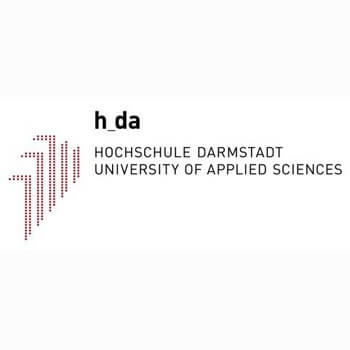
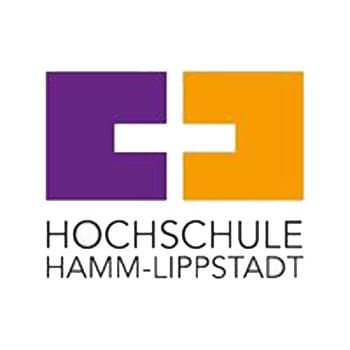
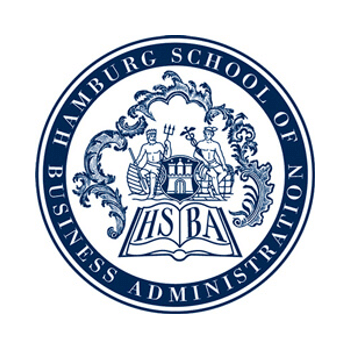


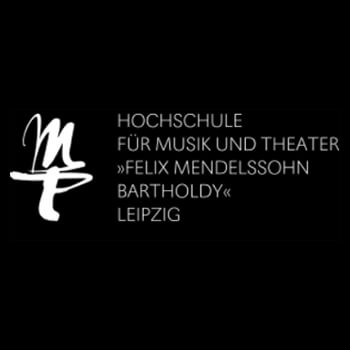
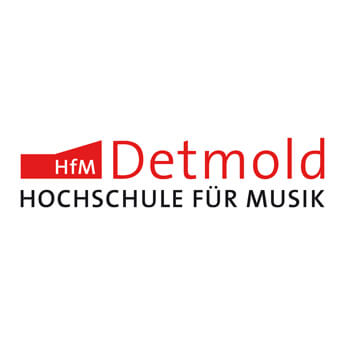
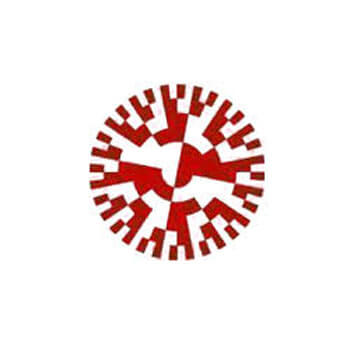










Leave a Reply